How many times have you had a bored little one on your hands and needed to find something that would keep them stimulated and engaged? Well, if you have ever found yourself googling for ideas, it’s very likely that the phrase “sensory bin ideas” has popped up at least once!
There are a lot of benefits to making a sensory bin for your child. Not only is it quick, cheap and easy, but you’re opening up your child to a whole new learning experience!
This weeks article has been written by a wonderful guest author, content creator at speech blubs: Liz Talton! Enjoy!
Sensory bins are an incredible way to introduce new textures and imaginative play for children. But for those kids with autism and sensory processing disorder, sensory bins are a useful form of therapy. If you have no clue about how to make sensory bins, there are easy sensory bins to get you started!
When I first started doing sensory bins for my son with autism, I had no idea what to put in a sensory bin. So, my research began! When researching sensory bin activities, I kept a couple of things in mind:
- I needed activities that introduced him to a variety of textures to desensitize him
- I needed the sensory bin activities to be as easy as possible
With those two points in mind, I have plenty of easy sensory bin ideas to get us started!
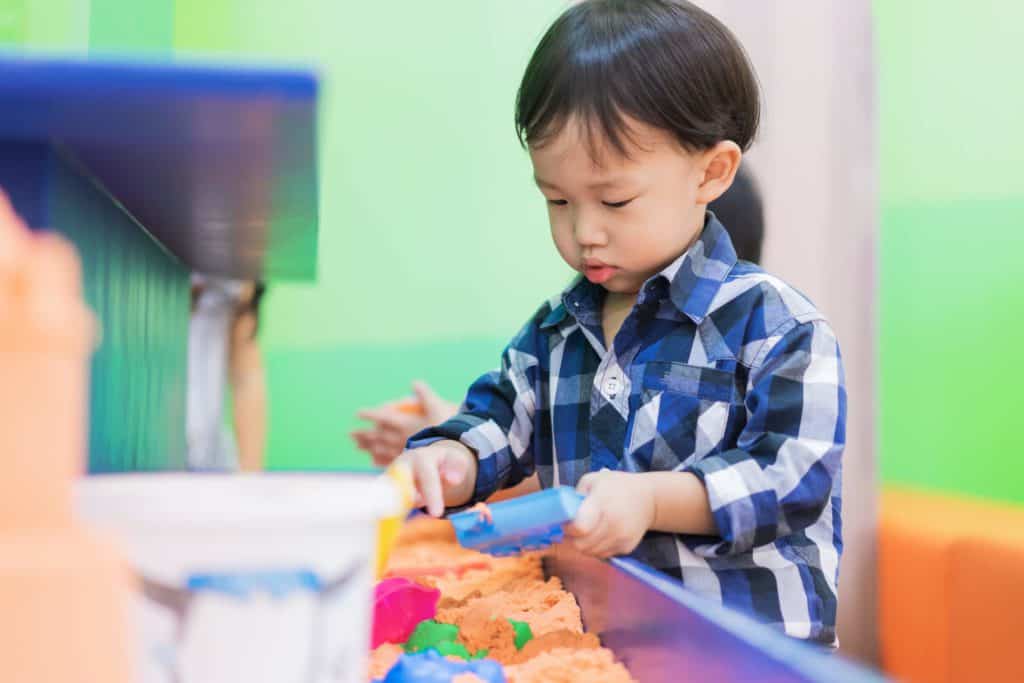
1. Sensory bin idea, or doing the washing up?
For this sensory bin, take dish soap, water, and fill a plastic bin until the water is full of bubbles.
Then add in plastic utensils and dishware (the kind of play toys that come with a plastic kitchen set). Have your child “wash the dishes” with a scrub brush. You can even extend this sensory bin activity to include a drying station with dish towels and a drying rack next to the sensory “washing” bin.
This is an amazing sensory activity because it combines a sensory experience with household tasks to teach early responsibility.
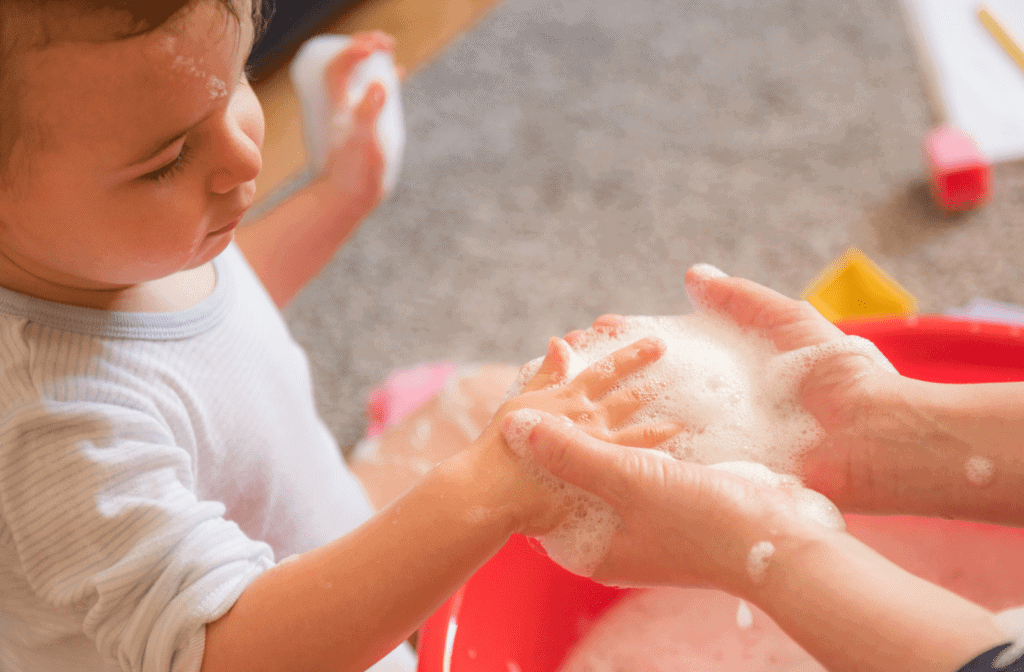
2. Shredded Paper Sensory Bin
Simply take some old bills through a shred machine, then take the shredded paper and place it in a plastic bin. Now, get creative! You can add plastic animals, trucks, cars, cups, and more. Although this is a simple ingredient sensory bin, your child will need a significant amount of imagination to play.
3. Flour Pit
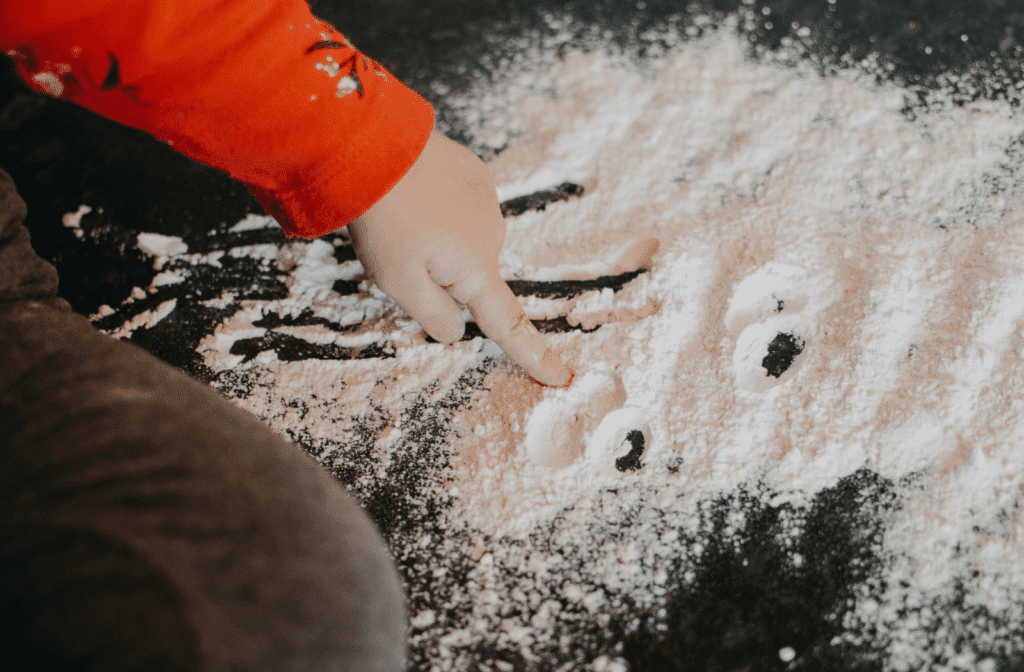
Flour makes a terrific dry ingredient to add to any sensory bin activity. But to make it as simple as possible, just pour a desired amount of flour into a bin. The amount you want depends on the size of the container you are using. However, there should be enough flour for your child to make small piles with it.
This sensory bin is called “flour pit” because along with flour a child uses small construction vehicles for playing at a “construction site.”
4. Letter Hunt and Numbers Game
Letter hunt involves searching through a sensory bin for plastic letters or alphabet letters from a wooden puzzle. All you need to do is fill a container bin with one of the following dry ingredients:
- Rice
- Black beans
- Kidney beans
- Garbanzo beans
- Bowtie pasta
You can even color the rice ahead of time with food coloring, but always make sure the rice is completely dry before using it for a sensory activity. Alternatively, you could add plastic numbers andhave your child retrieve the numbers in order. In other words, you can use this idea to create a counting game! For younger children, you can add the numbers 1 through 5 or 1 through 10 to make it simpler to complete the activity.
While you can add visual stimulation with colored rice, the dry ingredients also make noise when moved to create hearing stimulation as well.
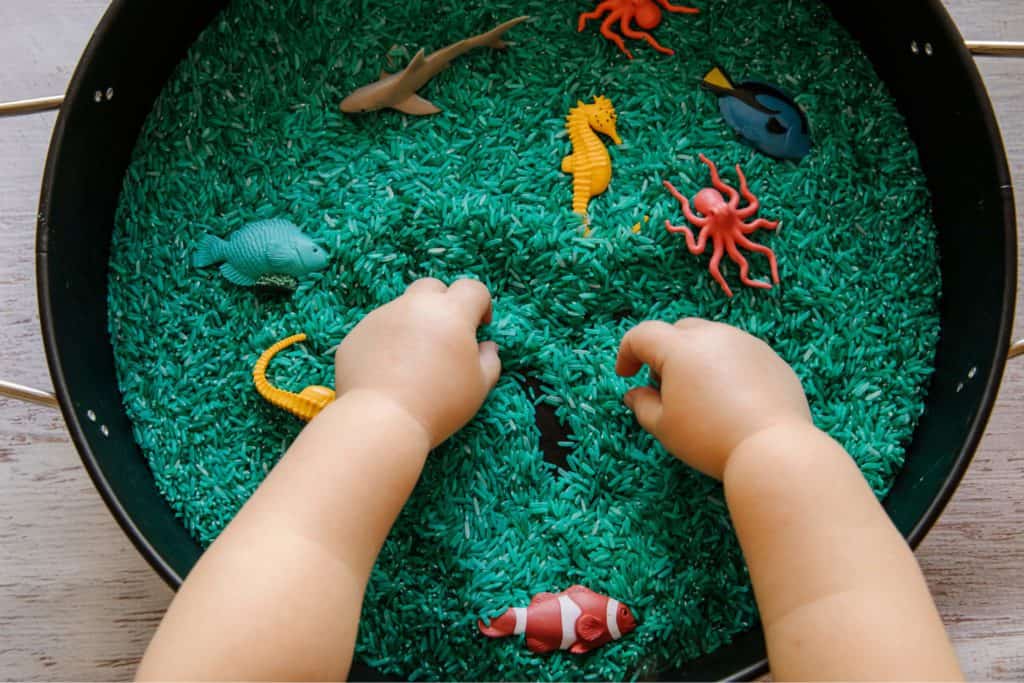
5. Scoop and Pour
By the name of the sensory bin, you have probably guessed the activity. Simply add a dry ingredient like black beans, then give your child large plastic spoons and ladles along with an ice cube tray. After that, all your child must do is scoop and pour the black beans into the ice cube tray. You can also do this same activity with your child’s favourite cereal. It will be completely taste-safe!
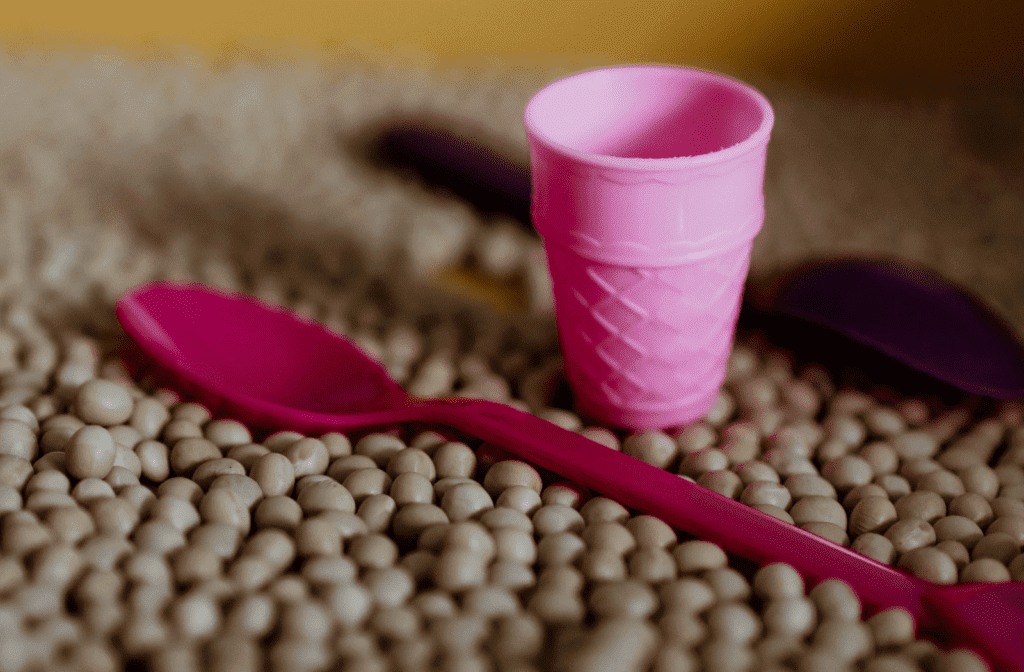
6. What a lot of “Smashing” Sensory bin ideas!
Speaking of cereal, another great activity is a “smashing” sensory bin. This activity is great for children needing help with fine motor skills or for kids who like destroying things! Take cereal like Cheerios or Fruit Loops and supply your child with a small plastic or metal hammer. Place the cereal into a plastic bin and instruct your child to smash each circle one at a time.
My son loves this activity. Mainly because he really enjoys destroying things and seeing how they are put together.
This is an activity that allows him to appropriately destroy something. Plus, all the mess stays contained in a shallow plastic container. Three cheers for easy cleanup!
Your Child’s Interests Provide Fun Sensory Experiences
When you start learning about sensory bins, there is an overwhelming amount of information out there! However, once you learn some key ingredients, add in your own creativity, and your child’s interests’ sensory bins become a fun multisensory experience for both you and your child.
If your child is on the autism spectrum or he/she has sensory processing disorder, sensory bins are an easy way to slowly expose your child to new sensory stimulation because they lessen an overreaction to sensory input. Plus, providing these experiences gives your child a healthy outlet to help manage anxiousness related to external sensory input.
Liz Talton is a mom of 2 wonderful boys, has a Masters in Psychology. She advocates for her son with autism. That’s why she joined content creators at Speech Blubs, a speech therapy at-home app that helps many kids with speech difficulties produce first words and sounds.
This post was featured by Twinkl in their Creativity in Children blog.
You might also like:
9 easy and adorable nature crafts for kids

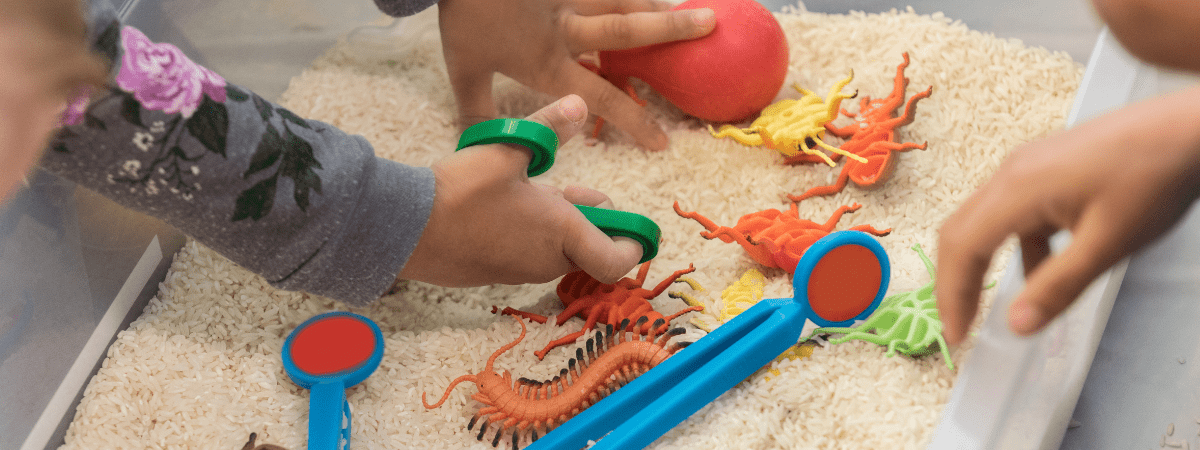

0 Comments